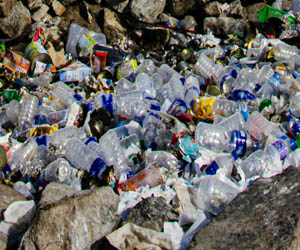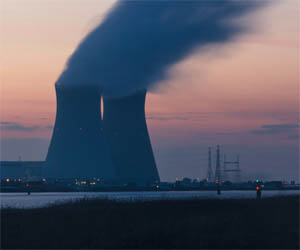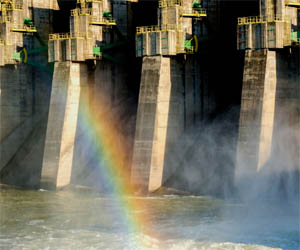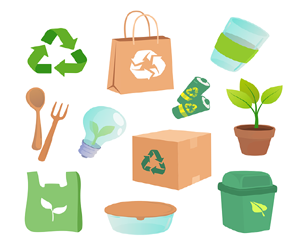



Cat litter box habits are an essential aspect of feline care and well-being. Maintaining good litter box habits not only keeps your home clean but also ensures your cat's comfort and mental health. In this article, we'll explore the importance of cat litter box habits, common issues that may arise, and tips to keep your cat's litter box experience positive.
The Importance Of Proper Litter Box Habits:
Litter boxes are more than just a convenience for cat owners; they are a fundamental aspect of a cat's daily routine. Proper litter box habits are crucial for several reasons:
Hygiene: A clean litter box prevents the buildup of waste, which can lead to odors and bacterial growth. Regular cleaning is essential to maintain a hygienic environment for both your cat and your household.
Mental Health: Cats are naturally clean animals and may become stressed or anxious if their litter box is not up to their standards. Maintaining a clean box contributes to your cat's mental well-being.
Preventing Accidents: A cat that doesn't have access to a clean and properly placed litter box may resort to urinating or defecating in inappropriate places, such as on your furniture or floors.
Common Litter Box Issues:
Several common litter box issues can arise, requiring attention and intervention:
Litter Box Aversion: Cats may develop a dislike for their litter box due to factors like a dirty box, an unfavorable type of litter, or an unsuitable location.
Territorial Marking: Unneutered male cats, in particular, may mark their territory by spraying urine outside the litter box.
Medical Concerns: In some cases, changes in litter box habits can be a sign of an underlying medical issue, such as a urinary tract infection. Always consult a veterinarian if you notice sudden changes in behavior.
Stress-Related Issues: Environmental stressors, changes in the household, or the presence of other animals can lead to litter box problems.
Tips For Maintaining Good Litter Box Habits:
To ensure your cat maintains proper litter box habits, consider the following tips:
Cleanliness: Scoop the litter box daily to remove waste, and change the litter regularly. Wash the box with mild, unscented soap during litter changes to keep it fresh.
Type Of Litter: Experiment with different types of cat litter to find one that your cat prefers. Some cats prefer clumping litter, while others may prefer non-clumping or natural alternatives.
Location: Place the litter box in a quiet, easily accessible location. Avoid placing it near your cat's food and water bowls. Providing multiple boxes in different areas can also help, especially in multi-cat households.
Stress Reduction: Minimize environmental stressors that may cause litter box aversion. Provide hiding spots, perches, and opportunities for play and mental stimulation.
Consult A Veterinarian: If your cat's litter box habits change suddenly, or if you notice blood in the urine, straining, or other concerning signs, consult a veterinarian promptly to rule out medical issues.
Litter Box Training: For kittens or cats with litter box issues, consider gentle retraining with positive reinforcement. Rewarding good behavior can help reestablish proper habits.
Cat litter box habits are a significant part of feline care. By maintaining a clean and appropriate litter box, addressing any issues promptly, and creating a stress-free environment, you can ensure that your cat's litter box experience is a positive one, contributing to their overall well-being and your household harmony.
A Sustainable Solution For A Greener World
 Diverse Feedstocks
Diverse Feedstocks
One of the notable aspects of fuel production from waste streams is the versatility of feedstock materials. Different types of waste can be used, making this approach a flexible solution for waste management and energy production. Biomass, plastics, and organic waste can all be converted into fuels, diverting them from landfills and incineration.
Biofuels: A Renewable Option
Biofuels are a significant product of this waste-to-fuel process. They are typically produced from biological materials, such as plant residues or algae. Ethanol and biodiesel are common biofuels that can be used to replace or blend with traditional gasoline and diesel, reducing the carbon footprint of transportation.
Synthetic Fuels: A Clean Alternative
In addition to biofuels, waste-to-fuel processes can also produce synthetic fuels. Synthetic fuels, such as synthetic gasoline or synthetic diesel, are made from waste materials through chemical processes. These fuels are compatible with existing internal combustion engines and can be used in a wide range of applications, including transportation and industrial processes.
Environmental And Economic Benefits
Fuel production from waste streams offers a range of environmental and economic advantages. It contributes to waste reduction and diversion, mitigating the environmental impact of landfills and reducing the release of greenhouse gases. This approach also reduces the demand for non-renewable fossil fuels, decreasing carbon emissions and reliance on depleting natural resources.
From an economic perspective, converting waste materials into fuels creates opportunities for job growth in waste collection, processing, and fuel production industries. It can stimulate local economies and promote sustainable practices, contributing to a more resilient and vibrant society.
 Recurring Dreams: Some individuals experience recurring dreams where the same themes, scenarios, or even specific characters reappear. These dreams may be a subconscious attempt to grapple with persistent issues, providing an opportunity for self-reflection and problem-solving.
Recurring Dreams: Some individuals experience recurring dreams where the same themes, scenarios, or even specific characters reappear. These dreams may be a subconscious attempt to grapple with persistent issues, providing an opportunity for self-reflection and problem-solving.
Premonitions: Some people claim to have dreamt of events before they occurred, a phenomenon known as precognitive dreaming. While the scientific validity of these claims remains a subject of debate, many believe these dreams to be glimpses of the future.
Sleep Paralysis: Sleep paralysis is a frightening phenomenon in which individuals wake up from a dream, unable to move, and may experience hallucinations or a sense of impending doom. It occurs as one transitions between sleep and wakefulness and is often linked to a disrupted sleep cycle.
Déjà Vu: Déjà vu is the feeling that a current experience has been previously encountered in a dream. This intriguing phenomenon has been the subject of much speculation and has sparked questions about the relationship between dreams and reality.
False Memories: Dreams have the power to create false memories. People may vividly recall events from their dreams as if they were real, blurring the lines between dream and waking life.
Out-Of-Body Experiences (OBEs): Some individuals report having dreams where they view their own bodies from an external perspective. These experiences can be both profound and disorienting, challenging our understanding of consciousness and self.
Paving The Way For A Sustainable Future
 Renewable Energy's Ascent: One of the most promising avenues for fossil fuel transition is the rise of renewable energy sources. Solar, wind, hydro, and geothermal power have experienced exponential growth, proving their capacity to provide cleaner, more sustainable alternatives. These sources are abundant, environmentally friendly, and increasingly cost-competitive. Solar and wind, in particular, have emerged as game-changers, offering efficient and scalable solutions for power generation.
Renewable Energy's Ascent: One of the most promising avenues for fossil fuel transition is the rise of renewable energy sources. Solar, wind, hydro, and geothermal power have experienced exponential growth, proving their capacity to provide cleaner, more sustainable alternatives. These sources are abundant, environmentally friendly, and increasingly cost-competitive. Solar and wind, in particular, have emerged as game-changers, offering efficient and scalable solutions for power generation.
Challenges And Obstacles: The transition from fossil fuels is not without its challenges. A major obstacle is the existing infrastructure and economic dependence on fossil fuels. Many industries, jobs, and economies are intricately tied to the fossil fuel sector. Transitioning away from these sources must be managed carefully to minimize economic disruption and job losses.
Another challenge is the intermittency of some renewable energy sources. Solar and wind energy production can be inconsistent, depending on weather conditions. To address this, advancements in energy storage and grid technology are essential for ensuring a stable and reliable energy supply.
Policy And Government Initiatives: Effective government policies and incentives play a pivotal role in fostering a successful fossil fuel transition. Nations worldwide are implementing regulations, carbon pricing, and incentives to promote renewable energy adoption and energy efficiency. These measures encourage businesses and individuals to invest in cleaner energy solutions while penalizing carbon-intensive practices.






A Testament To Man's Best Friend
 Unconditional Devotion: One of the most striking aspects of canine loyalty is its unconditional nature. Dogs don't judge, hold grudges, or question their owners. They offer their love, trust, and devotion without reservation. This unwavering loyalty can have a profound impact on the lives of those fortunate enough to experience it.
Unconditional Devotion: One of the most striking aspects of canine loyalty is its unconditional nature. Dogs don't judge, hold grudges, or question their owners. They offer their love, trust, and devotion without reservation. This unwavering loyalty can have a profound impact on the lives of those fortunate enough to experience it.
Trust And Dependability: The loyalty of dogs is built on trust and dependability. Dogs place their trust in their human companions, knowing that they will be cared for, loved, and protected. In return, humans trust their dogs to be steadfast, reliable companions. This mutual trust forms the foundation of the bond that brings comfort and stability to both parties.
Emotional Support: Dogs have an uncanny ability to sense their owner's emotions and respond with empathy. When their human companions are sad, stressed, or anxious, dogs often offer comfort and solace. This emotional support is a testament to their loyalty and their unique capacity to provide unwavering companionship.
Protection And Fidelity: Dogs have a natural protective instinct, and this is often an expression of their loyalty. They will defend their owners when they sense a threat, whether it's a stranger at the door or an intimidating situation. This protective loyalty has made dogs trusted allies and guardians throughout history.
The Benefits Of Canine Loyalty: The loyalty of dogs offers numerous benefits to both dogs and their human counterparts. For humans, the companionship and unwavering loyalty of a dog can reduce stress, anxiety, and depression. It provides a sense of security and emotional support that is unparalleled.
Unraveling The Mysteries In The Fields
 Formation Techniques And Precision
Formation Techniques And Precision
One of the most compelling aspects of crop circle investigations is the examination of formation techniques and precision. Researchers have discovered that while some crop circles can be easily attributed to human-made efforts using ropes and boards, others exhibit remarkable precision and intricacy that challenge conventional explanations. These formations often display geometric shapes and mathematical properties that are difficult to achieve through simple means.
Elongated Crop Nodes
An intriguing finding in some crop circle investigations is the discovery of elongated crop nodes. In some formations, the crop plants exhibit elongation of their nodes, or the points where leaves and stems connect. This phenomenon is often associated with crop circles that have not been obviously man-made, leading researchers to investigate the potential mechanisms behind this plant response.
Magnetic Anomalies And Radiation
Researchers have noted magnetic anomalies and increased radiation levels in the vicinity of some crop circles. These findings have fueled speculation about the involvement of external forces or energy sources in the creation of certain formations. While these anomalies are intriguing, their connection to crop circle formation remains a subject of ongoing research and debate.